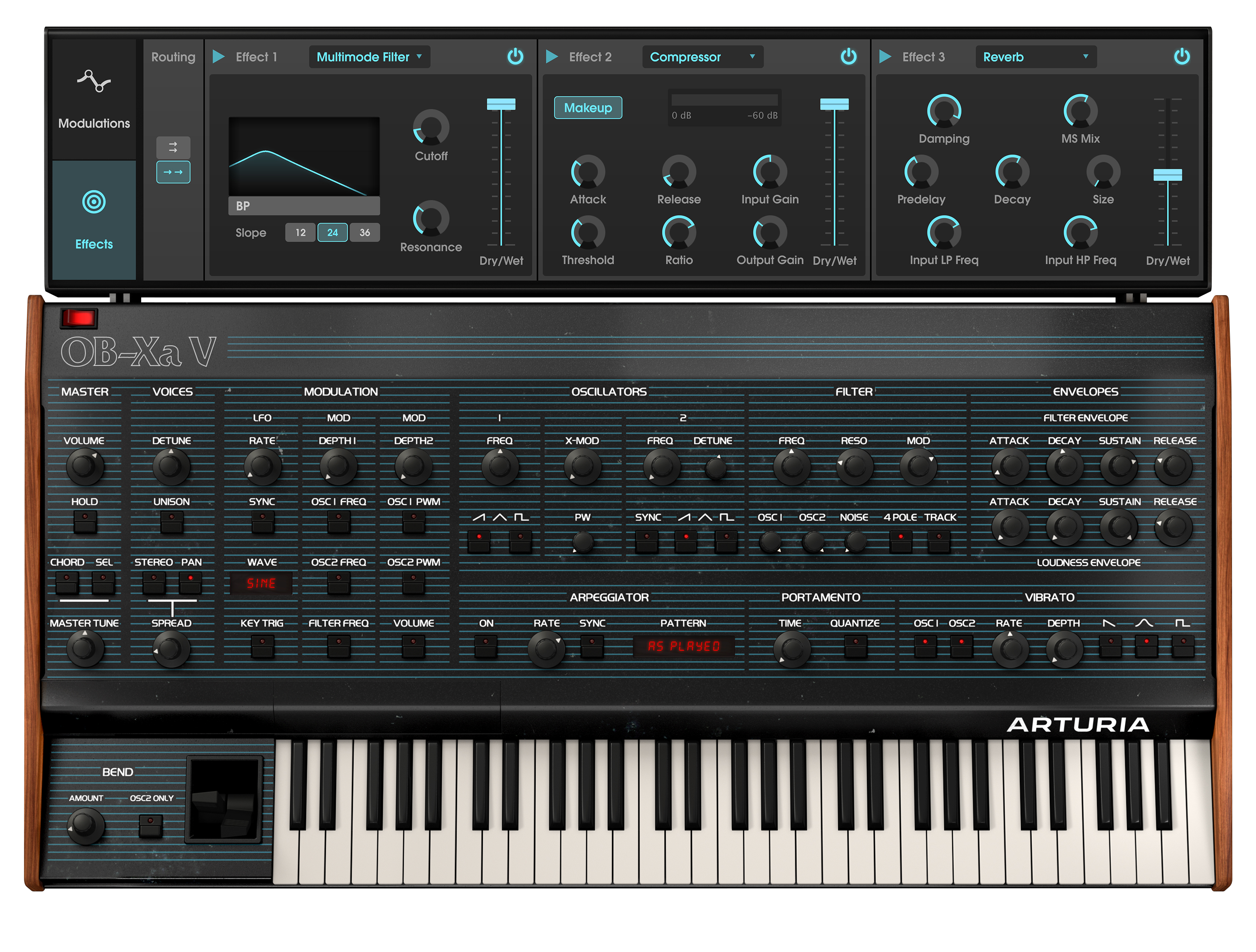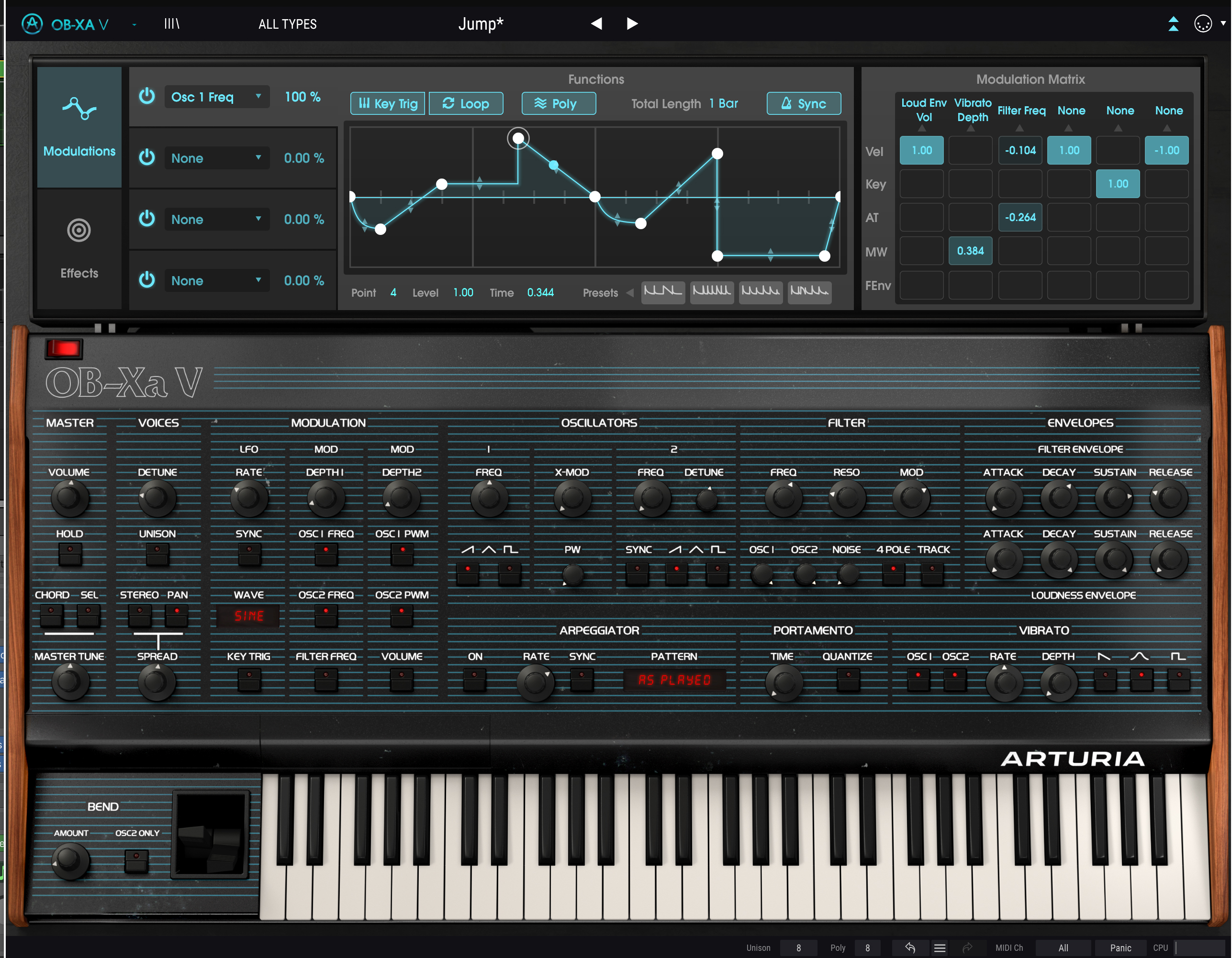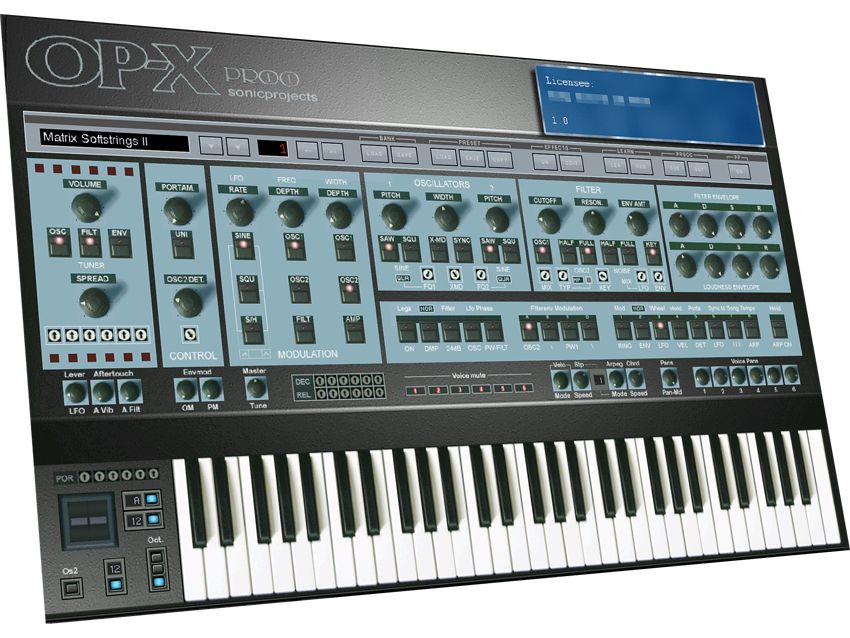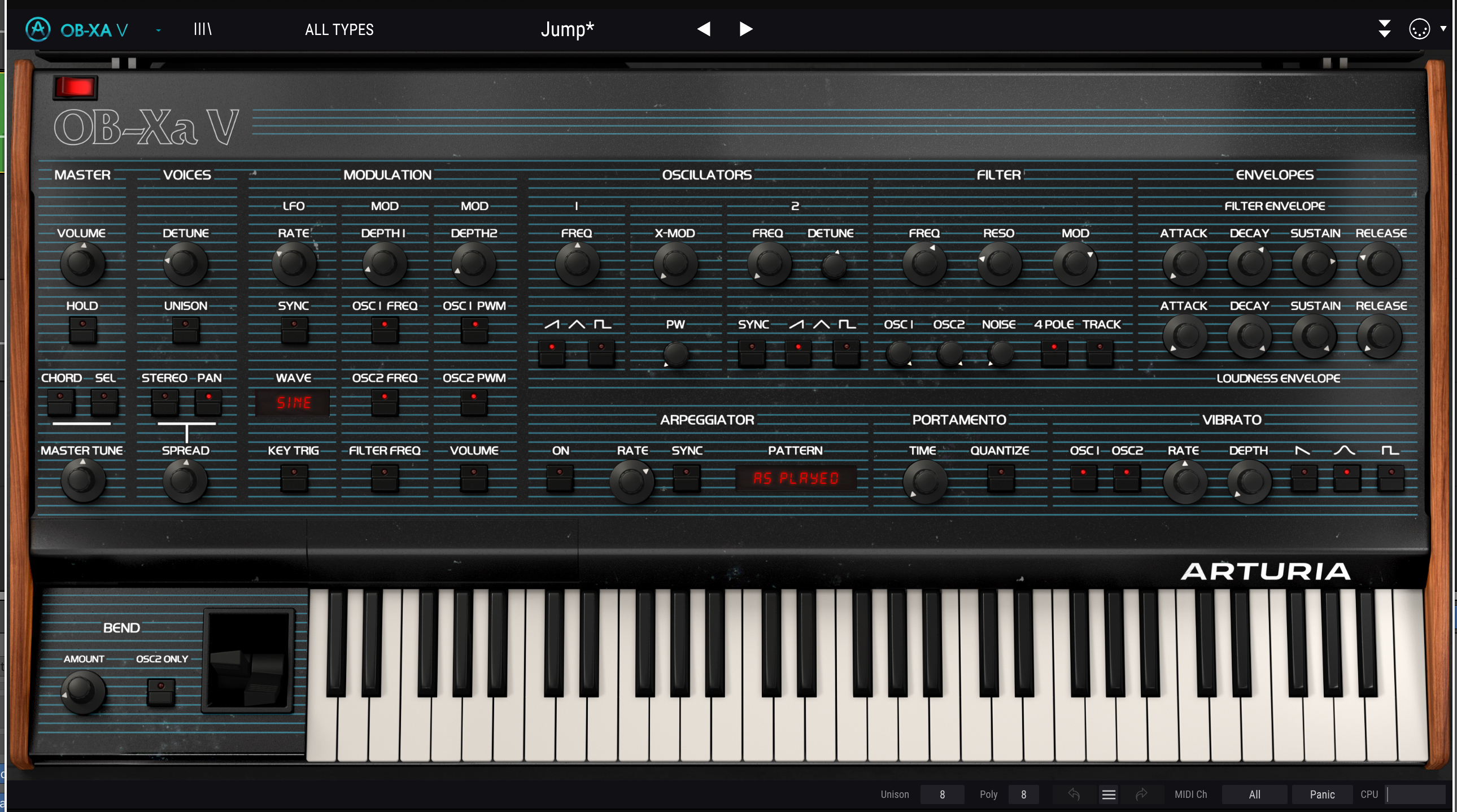MusicRadar Verdict
Great-sounding OB-Xa plugin with some very easy to use advanced features. Another top emulation from Arturia.
Pros
- +
Lovely OB-Xa emulation…
- +
… with some fine 21st century additions.
- +
Some fantastic and varied sounds.
- +
Great and easy modulation options.
- +
Very useful effects.
Cons
- -
Van Halen’s Jump.
- -
Some sounds are a bit processor-hungry.
MusicRadar's got your back
What is it?
There’s been a decades-lasting joke among members of the Computer Music team – and indeed between us and many other music gear magazines – that whenever we attend a music equipment show, we are guaranteed to hear someone, usually of middling age, either demoing or auditioning a new synth by playing the intro to Van Halen’s Jump. At least five times. A day.
And considering we’ve been going to gear shows for two decades now, that’s an awful lot of times that we have heard that intro. It’s fair to say, then, that when we finally get to review an emulation of the synth behind it, the Oberheim OB-Xa, you can surely understand that we are approaching said review with some trepidation. Actual anxiety and shaking, if you must ask, and even the ‘fact’ that some say the actual synth used on Jump was actually the OB-X (the ‘a’s predecessor), doesn’t calm us down at all, especially when the very first video we stumble upon on Arturia’s website demoing this new OB-Xa V plugin hits that growl intro chord, and plays that (bloody) riff…
But if you can, look past that intro – and apologies for planting it in your ear for the rest of the day – as the OB-Xa was used on many other tracks and by artists as diverse as Talk Talk and Prince. And to seal its approval in our eyes, Gary Numan once cited it as the ‘best analogue synth ever’.
X versus a versus V
The original early 80s synth, this emulates had a 2-oscillator design, with 4, 6, or 8-voice options. Whereas its predecessor, the OB-X, as mentioned earlier, was more raw and aggressive, the ‘a’ refined things a little as its internal circuitry became more integrated, although the newer synth did offer more flexible 2 and 4-pole filtering to bring back some of that aggression. The ‘a’ also delivered more presets and keyboard splits, although it did drop the X’s FM modulation option (where one oscillator could modulate the frequency of the other) in favour of pulse width modulation.
With OB-Xa V, however, Arturia have supplied both modulation options, and of course, those polyphonic restrictions have been lifted, so you get up to 16 voices. While the exacting sound of the original has been adhered to thanks to Arturia’s TAE® (True Analog Emulation) technology, the Grenoble-based company have taken the opportunity to add some other features – and why not? You, therefore, get four waveforms per oscillator (over the two on the original), additional modulation options, nine effects, up to eight voices of unison, an arpeggiator, stereo spread plus greater LFO and mix flexibility. While you could argue that it’s not an exacting replica, then, we think these additions are sensible and sensitive to the original. And, let’s face it, at its core, its sound really does make you want to... Jump! Sorry, we just had to.

Performance and verdict
So getting into the sounds – and moving swiftly on from the ‘one’ that OB-Xa V loads with – it’s pleasing that you can search by category (including styles like Bizarre and Aggressive) and also by type (Bass, Lead and so on). We also like the fact that the Advanced Modulation options are in full effect, adding a rich and dynamic quality to lots of the presets. Indeed it’s a good idea to keep this tab open as you explore them to learn how the programmers make the most of this very useful side of the synth.
Like the OB-Xa V itself, the sounds deliver a good mix of old and new, with classic clean and dirty basses and leads sitting alongside more contemporary presets that will suit all sorts of modern genres. The mix theme continues with both clean and ‘growly’ – the dirt you expect from the OB range being nicely on display but there also being surprisingly clean and wholesome sounds on offer. Some of the pads are rich and beautifully evolving – easily tweaked and drenched in effects for your Scandi dramas. And, as we say later, it’s good that many are left untouched by effects so you can enjoy the rawness before the ladling commences.
Overall, it’s that word ‘mix’ again; the range is wide and varied, and OB-Xa V is certainly more ‘racehorse’ than ‘workhorse’, and well suited to a large variety of production tasks. And the modulation options make programming the synth both easy and inspiring – it’s truly great in that regard.

Advanced panel options

Sonic Projects OP-X Pro II
Features the sound of Oberheim’s OB-X, OB-Xa and OB-8. A great emulation and superb free plugin
Datsounds Obxd
Features the sound of Oberheim’s OB-X, OB-Xa and OB-8. A great emulation and superb free plugin
If there’s one criticism that has been levelled at Arturia’s emulations over the years it’s that they can sound rather drenched in effects. Happily, OB-Xa V doesn’t exhibit this too much (the Jump preset doesn’t even feature the original effects as standard) but you can easily control the applied effects by clicking the Advanced Panel. Here you get two options: Effects and Modulation. Within the former, there are some mostly great-sounding effects, with nine options selectable from drop-down menus for each of the three blocks on offer. Parameters are shown for each effect ranging from a couple for the Bitcrusher up to seven for the reverb.
The Modulation options are fantastic, with up to four envelopes (selectable from the middle screen) that you can assign to most parameters by way of destination drop-down menus. You get a neat graphical representation of the waveform in the centre which is editable in up to 16 steps, so you can effectively turn it into any wave type you want, although there are loads of presets to choose from here too. Finally, you get an Input Modulators mod matrix to connect more common MIDI sources (velocity, modwheel etc) to destinations. Both Modulation and Effects sections are very tidy and useful, making advanced edits easy.
Conclusion
Aside from this being a faithful rendition of the original OB-Xa (and bits of the X), OB-Xa V adds some lovely touches in terms of some modern modulation and effects. But it’s the brilliantly simple way that both are implemented that is a huge highlight. It could have been that these would detract from the authentic recreation but as they are almost bolted on (but in a much better way than that expression implies) you can enjoy the purity of the original synth and then explore its modern options at your leisure.
There are other options if you want the OB-Xa sound, from freeware right up to huge and expensive hardware. Nor is OB-Xa V that cheap – although there is an intro offer at the time of writing and it will surely become part of V Collection. Whichever way you look at it though, OB-Xa V does give you a great marriage of old and new, and overall, we can see it being a synth we return to again and again for a wide variety of functions, not to mention quick sound design and inspiration. It’s so good that we’re
MusicRadar verdict: Great-sounding OB-Xa plugin with some very easy to use advanced features. Another top emulation from Arturia.
The Web Says
"So does the world need another ‘80s poly emulation? If it’s the OB-Xa V, the answer is yes. It recreates one of the most iconic synths of all time and adds plenty of useful and modern functionality to it."
Attack Magazine
"The sheer versatility of this soft synth is evident from a quick breeze through the presets. Suitable for multiple genres of music and especially, in the current zeitgeist, for soundtracks and scores, it sounds simply gorgeous."
Ask Audio
Hands-on demos
Once upon a synth
Synth Anatomy
Arturia
Specifications
- TYPE: Virtual instrument recreation of the classic Oberheim OB-Xa
- KEY FEATURES: Stereo spread with left/right offsets on oscillator, filter and LFO parameters; Modulation matrix; Arpeggiator; More flexibility on the LFO for easy modulation; Up to 16 voice polyphony; Innovative voice detuning; On-board effects: delay, chorus, reverb, phaser, flanger, compressor, overdrive, multimode filter, and bitcrusher; Over 400 presets
- SYSTEM REQUIREMENTS: Mac and PC (Win 7+, macOS 10.11+), VST 2.4, VST 3, AAX, Audio Unit
- CONTACT: Arturia
Computer Music magazine is the world’s best selling publication dedicated solely to making great music with your Mac or PC computer. Each issue it brings its lucky readers the best in cutting-edge tutorials, need-to-know, expert software reviews and even all the tools you actually need to make great music today, courtesy of our legendary CM Plugin Suite.
“I called out to Mutt and said, ‘How about this?’... It was a complete fluke": How Def Leppard created a rock anthem - with a little bit of divine intervention
Baby Audio's Smooth Operator spectral balancing plugin goes pro
"It was ugly, like watching a divorce between four people. After a while, I had to get out": Beatles engineer Geoff Emerick on the recording of Abbey Road, track-by-track











